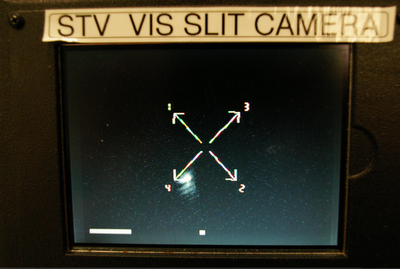Tracking stars
One of the things I've been working on up here is trying to keep a star centered in my spectrograph. I bought a spare "tip-tilt corrector" or "autoguider" that takes a picture of the slit-mirror and calculates where the center of the star is. I used a fake laser "star" to test it out. It can only correct the bulk position of a star every few seconds so this isn't anything like adaptive optics, but it does keep the thing in the center.

It has a coordinate system so that it can tell you which way to move the star with respect to the spectrograph.

Once it finds the star and you tell it where the center is, it gives you the correction so that you can use that correction (a voltage) to move a corrector mirror (on a piezo). There were a few electronic bugs, to sort out still but it looks like it's going to be pretty nice.

The whole setup runs about $20-30k. The box was only 2K though. It's actually built for amature astronomers. I'm amazed at how many people actually do amature astronomy with pretty big (12-18") scopes. There's tons of people with decent sized telescopes that use this kind of gear in their back yard. Mostly doctors and corporate managers I suppose. Check out the astrophotography links here.

1 Comments:
you are quite creative
Post a Comment
<< Home